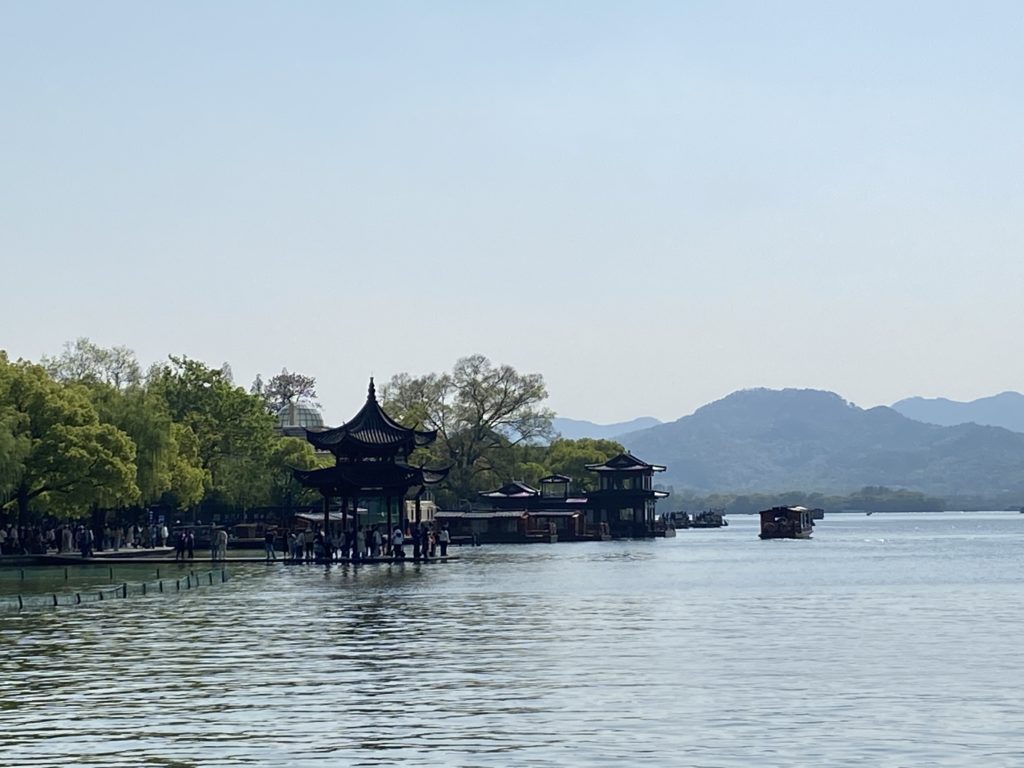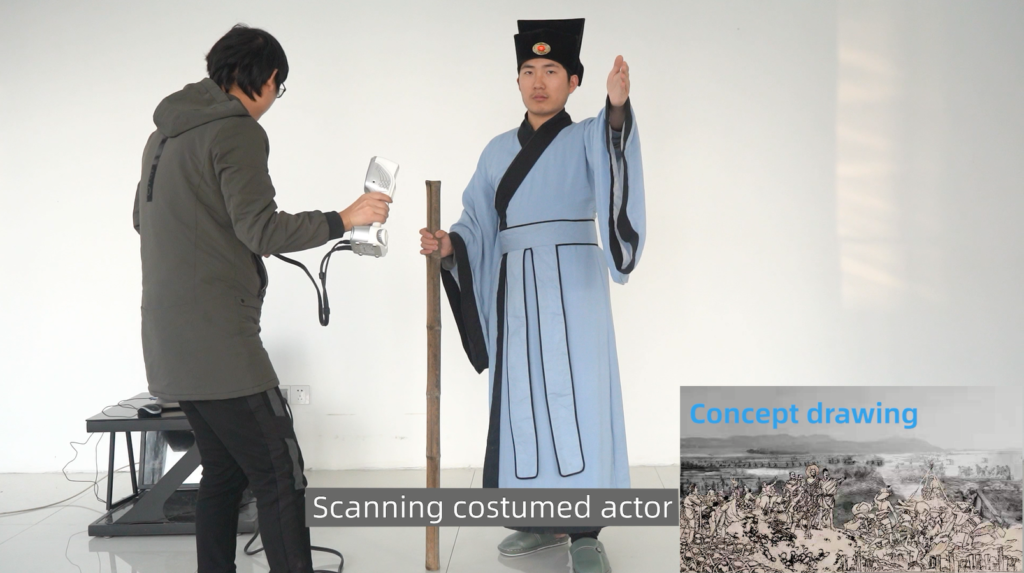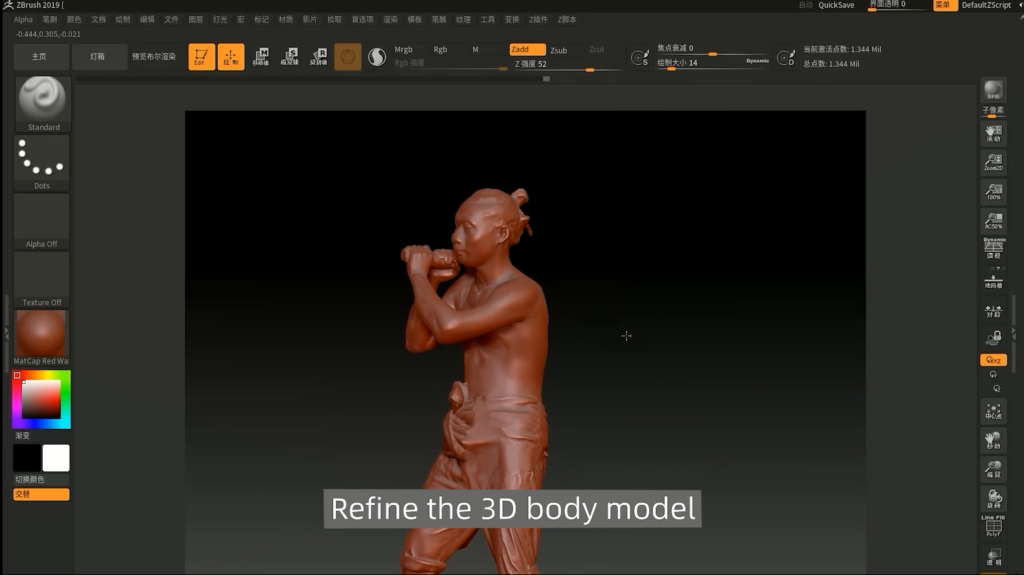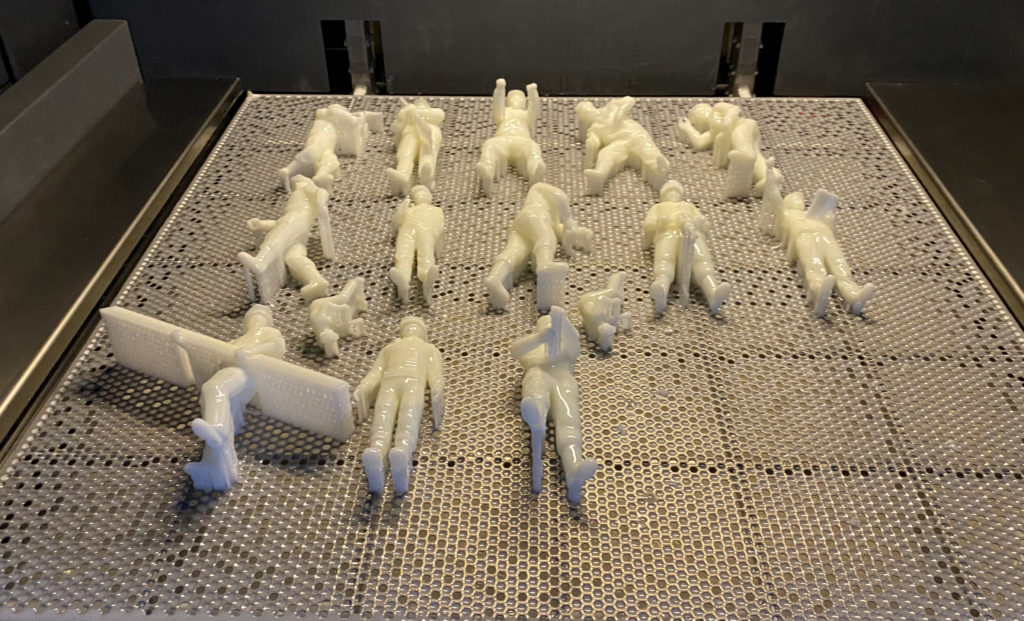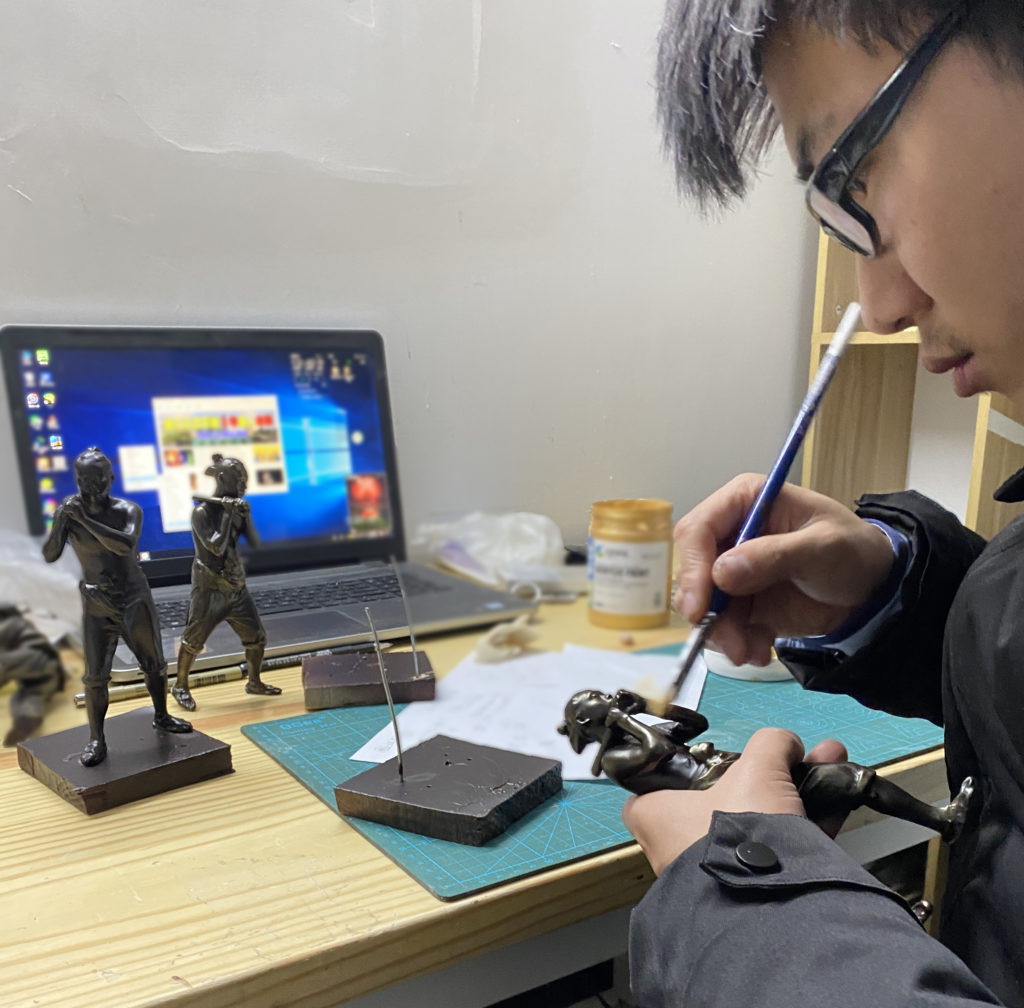The sand table is a relatively common form of cultural display in museums and similar centers. Compared with simple text and pictures, miniature dioramas directly show the audience a realistic scene and deepen their memory of it. However, the production of sand table scenes has traditionally been extremely labor-intensive, requiring a great deal of time and energy to complete. However, with the advent of 3D scanning and 3D printing, creating such a display has become increasingly streamlined.
Capturing Chinese History with 3D Printing
Traditionally, museum dioramas might be made with clay, which is difficult to preserve. Moreover, the production process of clay figurines is time-consuming, with more stringent requirements for designers. 3D scanning and printing technologies, however, disrupt traditional craftsmanship.
Demonstrating the possibilities, this technology was crucial to the production of a sand table exhibiting the Hangzhou Xianlin Reservoir. Chinese calligrapher, essayist, gastronomer, pharmacologist, poet, politician, and travel writer during the Song dynasty, Su Dongpo performed a treatment of West Lake while he was governor of Hangzhou in 1089. To recreate this event for the public, 3D printing and scanning were utilized. The technology greatly shortened the project production time, while vividly presenting the historically important event of Su Dongpo’s treatment of West Lake.
Let’s take a look behind the scenes of creating the diorama.
Step 1: 3D Scanning
We used a handheld iReal color 3D scanner to capture complete and accurate 3D models of actors who wore specific costumes and performed predetermined actions, designed according to a concept drawing.
With infrared structured light technology, the scanner offered a safe and comfortable scanning experience for the actors. The large field of view and depth of field made it possible perform smooth and fast scanning, benefiting the models who had to keep still in specific poses. The device can scan a full human body within just minutes. In this project, we scanned more than 10 individuals.
Step 2: Process Scan Data
Next, we performed post-processing of 3D scan data. This included enhancing details, sculpting where images were incomplete, modifying scan errors, adjusting poses, and creating tools in third-party software, such as ZBrush or Blender, to make it more detailed. The optimized 3D data can additionally be saved for digital archiving to be used in a variety of production processes, such as CNC engraving, open mold production, copper casting, and foam sculpting, according to various scene requirements.
Step 3: 3D Printing Figures for the Diorama
A UnionTech 3D printer was used to obtain the figurines quickly. Stereolithography (SLA) 3D printing has a number of advantages for this process, such as the production of smooth surfaces (easy for painting), fast printing, and rich details.
Step 4: Painting
Less-toxic, acrylic paints can be used to color the objects, due to rapid drying, durability, and water-resistance after drying.
Step 5: Final Set Up
Finally, we set up the scenes based on the drawing displayed in the showroom.
Artifacts of cultural heritage are imbued with national spirit, but also serve as historical treasure for all of humanity. It is, therefore, everyone’s responsibility to protect cultural heritage, thus bestowing a national inheritance to the proceeding generations, whenever possible. By blending technology and culture, we continue to explore new ways of cultural inheritance and protection. New digital technologies, such as the Internet, 3D digitization, 3D printing, AR and VR are increasingly being introduced into the protection and inheritance of cultural artifacts, so that vivid presentations of these materials are preserved in the now and into the future.
Subscribe to Our Email Newsletter
Stay up-to-date on all the latest news from the 3D printing industry and receive information and offers from third party vendors.
You May Also Like
3D Printing Unpeeled: New Arkema Material for HP, Saddle and Macro MEMS
A new Arkema material for MJF is said to reduce costs per part by up to 25% and have an 85% reusability ratio. HP 3D HR PA 12 S has been...
3D Printing News Briefs, January 20, 2024: FDM, LPBF, Underwater 3D Printer, Racing, & More
We’re starting off with a process certification in today’s 3D Printing News Briefs, and then moving on to research about solute trapping, laser powder bed fusion, and then moving on...
3D Printing Webinar and Event Roundup: December 3, 2023
We’ve got plenty of events and webinars coming up for you this week! Quickparts is having a Manufacturing Roadshow, America Makes is holding a Member Town Hall, Stratafest makes two...
Formnext 2023 Day Three: Slam Dunk
I’m high—high on trade show. I’ve met numerous new faces and reconnected with old friends, creating an absolutely wonderful atmosphere. The excitement is palpable over several emerging developments. The high...


